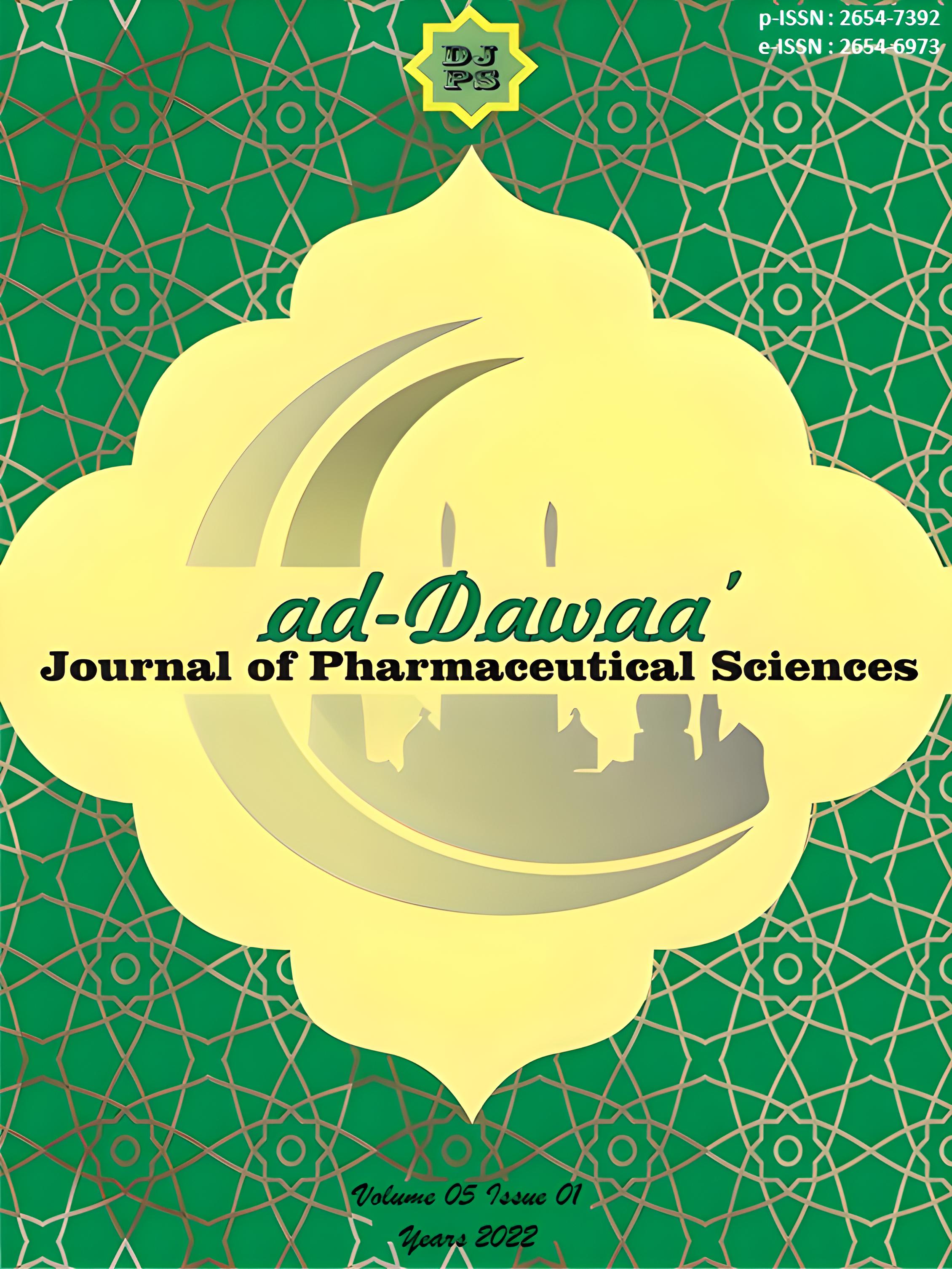The Utilization of Sugarcane Waste As an Alternative Material of Halal Hard Capsules Shell
DOI:
https://doi.org/10.24252/djps.v5i1.55035Keywords:
Sugarcane waste, Cellulose, Capsule shell, HalalAbstract
Capsules are dosage forms used to encapsulate powders, granules, pellets, liquids, and semi-solids. There are two types of capsules: soft capsules, which are usually used to encapsulate liquid and semi-solid formulas, and hard capsules, which are used to encapsulate solid formulas and non-aqueous liquids. This research aims to analyze the halal critical point of cellulose production and hard capsule shell from sugarcane waste and its handling solution, make sugarcane waste into quality halal cellulose according to pharmaceutical standards, and formulate halal cellulose into quality hard capsule shell according to pharmaceutical standards. Analyzed halal were done by material and procedure. Extraction cellulose by acetylation. Characterization of cellulose followed yield, viscosity, and swelling. Capsule shelll characterization followed size and disintegration time. This study concludes that the source of ethanol in capsule shell production is key to determining its halal status. The process must avoid using haram materials like pork, its derivatives, human body parts, khamr, blood, carrion, improperly slaughtered animals, and forbidden animals. Instead, sugarcane waste can be used to produce halal cellulose, which meets pharmaceutical standards and can be used to make hard capsule shells that are both halal and meet industry requirements.
Downloads
References
Cole, E. T., Cade, D., & Benameur, H. (2008). Challenges and opportunities in the encapsulation of liquid and semi-solid formulations into capsules for oral. Advanced Drug Delivery Review, 60(6), 747-756.
Ferrer, L. Pal, M. Hubbe, Nanocellulose in packaging: Advances in barrier layer technologies. Industrial Crops and Products, (2017) 65:574-582.
GMIA. (2012). Gelatin Handbook. Gelatin Manufacturer Institute of America.
Jamaludin, M. A. & Radzi, C. W. J. W. M. (2009). Teori istihaalah menurut perspektif islam dan sains: aplikasi terhadap beberapa penghasilan produk makanan. Shariah Journal, 17(1), 169-194.
Irwandi Jaswir, F. S. (2009). Extraction and characterization of gelatin from different marine fish species in Malaysia. International Food Research Journal, 16, 381-389.
Jones, B. E., & Podczeck, F. (2012). On the performance qualification of hypromellose capsules. International Journal of Pharmaceutics, 434(1-2), 503-506.
Kamaruddin, R., Iberahim, H., & Shabudin, A. (2012). Halal compliance critical control point (HCCCP) analysis of processed food. 2012 IEEE Business, Engineering & Industrial Applications Colloquium (BEIAC). IEEE.
P.Gullapalli, R., & L.Mazzitelli, C. (2017). Gelatin and Non-Gelatin Capsule Dosage Forms. Journal of Pharmaceutical Sciences, 106(6), 1453-1465.
Razaly, M. M., Zakaria, Z., Ismail, S. Z., & Jusoh, A. (2016). The Determination of Halal Critical Point in Halal Certified Chicken Slaughterhouses and Its Significance. Proceedings of the 3rd International Halal Conference (INHAC 2016) (pp. 259-271). Kuala Lumpur: Springer.
Riaz, M. R., & Chaudry, M. M. (2003). Halal Food Production. CRC Press.
Shaikh, H. S., Pandare, K. V., Nair, G., Varma, A. J. (2009). Utilization of sugarcane bagasse cellulose for producing cellulose acetates: Novel use of residual hemicellulose as plasticizer. Carbohydrate Polymers, 76(1), 23-29.
Seager, H. (1985). Soft gelatin capsules: a solution to many tableting problems. Pharmaceutical Technology, 9, 84-104.
Yūsuf, S. M. R. S., Ārif, A. A., and Zakariyya, L. (2018). The impact of the two maxims of istiḥālah and istihlāk upon the rulings on food and medicine: An analytical juristic study. Al-Majallah al-‘Ālamiyyah li al-Dirāsāt al-Fiqhiyyah wa al-Uṣūliyyah, 2(2), 6-17.
Downloads
Published
How to Cite
Issue
Section
License
Once an article was published in the journal, the author(s) are:
- granted to the journal right licensed under Creative Commons License Attribution that allows others to share the work with an acknowledgement of the work's authorship.
- permitted to publish their work online in third parties as it can lead to wider dissemination of the work.
- continue to be the copyright owner and allow the journal to publish the article with the CC BY-SA license
- receiving a DOI (Digital Object Identifier) of the work.









1.png)
